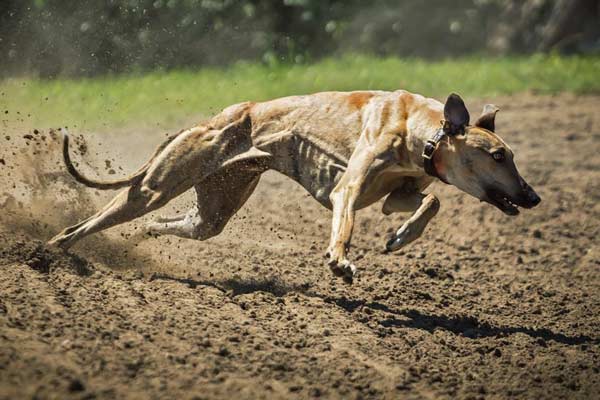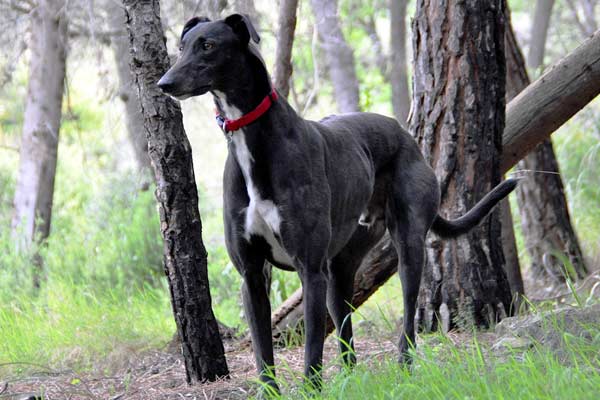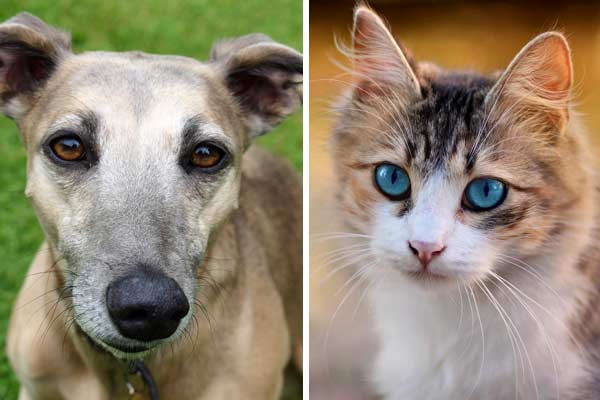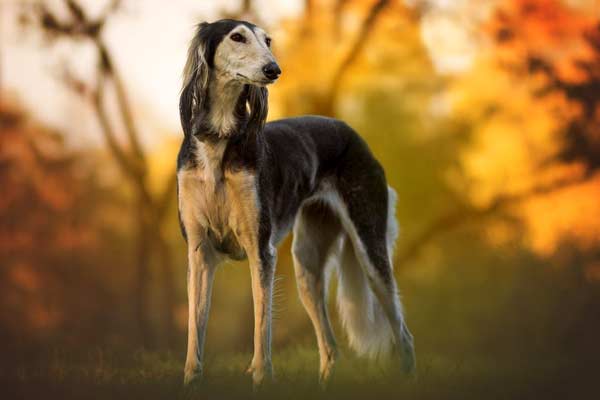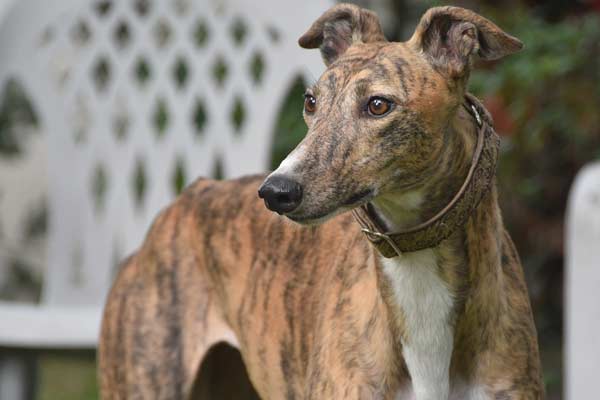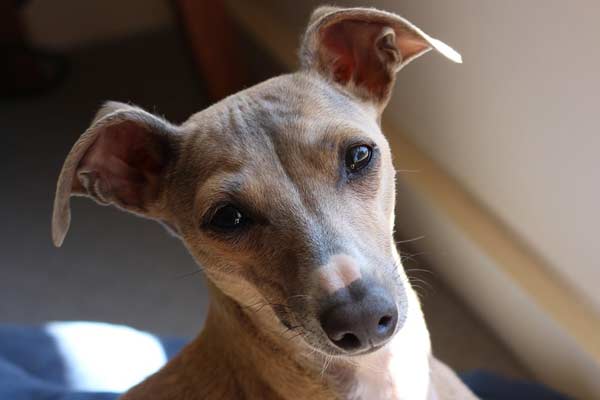How Much Exercise Do Greyhounds Need? Career Race Dog that Prefers to Lounge
As more people discover the sweet nature of Greyhounds, the adoption of retired race dogs continues to increase. Who doesn’t want to help a worthy cause and at the same time gain a phenomenal pet?
Maybe you have adopted a Greyhound. A common question you may share with others is, “How much exercise do Greyhounds need?”
Greyhounds vary in personality and energy levels, but most need 40 to 70 minutes of exercise daily.
Despite their famously fast speeds and recognition as among the top canine athletes, Greyhounds are designed for short bursts of activity.
They tend to have low to moderate energy levels, frequently refusing to engage in strenuous play or long walks.
The Greyhound’s high predatory drive makes a chase one of the few motivators to galvanize it into action.
Greyhounds have their brand of Athleticism
If someone asked you to name the ten most athletic breeds, undoubtedly, you would think of the same five as 90% of the population.
- Siberian Husky – can pull light loads with both speed and endurance
- Greyhound – can run 45 miles per hour and is indisputably the fastest canid by far
- Border Collie – a combination of speed and agility
- German Shepherd – speed, agility, and jumping prowess
- Belgian Malinois – perhaps not as fast as GSD but reported to be more agile and jumps higher
Maybe you thought of several more that did not make the shortlist. What about the Jack Russell Terrier that can run five times faster than it should and has phenomenal leaping abilities?
Standard Poodles are fast and can also swim and perform acrobatics like their smaller counterparts.
Moreover, there is the dock diving whippet and the weight-pulling Alaskan Malamute. Greyhounds can compete for the title of most athletic dog for the following reasons:
- More relative muscle than any other breed – 88% to 98% lean body mass
- Fastest dog – 42 to 45 miles per hour
- Higher concentration of red blood cells (50% to 70% compared to 40% to 60%) – greater oxygen-carrying capacity
- Larger heart
- Protein can run lower than other dogs, and creatinine levels range higher and still be normal for the breed – related to high muscle mass.
Short Sprints
Greyhounds fill an athletic niche. Once built for mid-distance coursing with short sprints after game animals, Greyhounds became track sprinters when the focus shifted to racing. Racing dogs were 15% to 20% larger than their forebearers and more muscle-bound.
A Greyhound can race in sprinting or distance divisions, but neither is very far.
Sprints are 550 yards or a little over a quarter of a mile. Most distance races are only 100 yards further.
While a few races are over 660 yards, they are still well under half a mile. It would be a sprint for a horse, and for a human, it would fall just short of a middle-distance race.
No longer selected for stamina, Greyhounds do not have the energy levels or exercise requirements of other large working dogs such as the German Shepherd and Rottweiler.
You will also note that many dogs with two-hour exercise recommendations are trotting dogs that only occasionally have to run at full speed. They also are built to perform their duties daily.
Racing Life
Some owners who adopt retired Greyhounds feel they need a lot of exercise because they train for racing every day, but this is not the case.
Greyhounds do their daily training before five months of age. Training is informal as pups are allowed to play and romp during this time.
Trainers stimulate them to pursue objects so they can develop their running muscles.
From five months to a year old, greyhounds are paired off and learn basic obedience and the meaning of a leash and a muzzle.
They are also introduced to handheld lures that make a lot of noise. They race against their partners.
When a Greyhound is a year old, competitive racing begins, although they are still practiced runs.
These dogs may run shorter distances more frequently than full-fledged racing dogs.
At fourteen months, Greyhounds enter the final phase of their training. After a year and a half, a Greyhound enters preliminary types of races (nonbetting and maiden races for first-time or inexperienced dogs).
If they do not perform well, they are retired early in their careers. Thus, many prospective owners can acquire a Greyhound puppy between 15 and 18 months old.
Dogs that succeed as racing Greyhounds only run twice a week and rest in cages most of the time. Trainers describe Greyhounds as low-energy dogs between races, according to Ngap.org.
How Much Exercise Do Greyhounds Need?
When you exercise your Greyhound, you should seek to accomplish four goals.
Physical Exertion
At 55 to 90 pounds, the Greyhound is a medium-large dog. She needs minimal physical activities to maintain the health of her musculoskeletal system.
Like many breeds their size, Greyhounds should get an average of an hour of exercise a day. The range varies from 45 minutes to an hour and 15 or 20 minutes.
Regular and organized movements support the weight-bearing functions of a Greyhound’s bones, circulation through the muscles, and lubrication of the joints.
You should encourage sufficient moderate to strenuous exertions to encompass 10% to 20% of your dog’s exercise regime.
If you exercise your dog for 45 minutes a day, at least five minutes should involve jogging, running, chasing, or playing (e.g., with an older child or another dog).
The more time you dedicate to high-intensity activities, the more musculature your Greyhound will retain.
However, you do not want to overexert your Greyhound, either. Nine to ten minutes of a 40-minute workout in moderate or rigorous activities are sufficient for your pet. Consistency is key, so your dog does not injure herself.
Training for team sports is great for bonding with your Greyhound and keeping her in shape. Intense training should only occur once or twice weekly.
Greyhounds can potentially excel at luring as it is likely to best keep their interest.
Dog parks and organized playdates can satisfy your dog’s exertional needs and provide mental enrichment.
Socialization
Exposing your dog to new and interesting things should be ongoing, even though the most optimal socialization window is between eight and twelve weeks old.
Fortunately, your dog has likely been well socialized before arriving in your home.
Racing Greyhounds are handled extensively at two months old. They travel, are crate-trained, and are always in the company of other dogs, albeit only Greyhounds.
When you keep up your socialization efforts, you ensure your dog is mentally adjusted and open to learning.
Training
Most Greyhounds receive extensive basic training on the track, but it may prove too specialized for your needs or not polished enough.
Your dog’s exercise should include training, but it does need to be much for adult dogs.
You can do two- to five-minute daily sessions or 10 to 15 minutes twice a week. You may have to increase this time when you want to train a new skill.
However, dogs learn best from multiple brief periods rather than a prolonged period of intense training.
Generally, it is beneficial to subtract the time you spend on training from your dog’s exercise allotment.
Mental Enrichment
Mental enrichment or stimulation is as important as the physical aspect of a Greyhound exercise regimen.
Depending on your dog’s activity level, you can add 15 to 20 minutes of mental stimulation to the exercise regimen.
You will often find it easier to incorporate mentally challenging activities into your dog’s exercise.
For example, you can take your dog on a different walking path daily, honing a few commands, or throwing the ball several times.
Sniffing areas that are outside the backyard are stimulating for dogs. Walking along busy sidewalks or active neighborhoods is unpredictable and mentally enriching for your Greyhound.
A park may work better for younger dogs because of the Greyhound’s propensity to chase small, fast-moving objects.
The following are common mental enrichment tools that work well for Greyhounds:
- Training takes as much or more energy than many physical activities
- Advanced training – for luring, dock diving, agility, or other partnered activities
- Dog park – meeting new dogs, socializing with old friends
- Playdate – breaks up your dog’s daily routine and increases her social skills
- Food puzzles – slows down eating and encourage thinking and learning
- Games – Fetch, chase
Occasionally, you can break up your Greyhound’s routine by taking a one-day break from physical exercise.
The Greyhound is a breed that will not mind the extra cuddling. Do not allow your dog to lure you into making inactivity a habit.
This video illustrates how taking your Greyhound to a dog park can be a way to get her high-intensity exercises in and mentally stimulate her.
Notice how this dog displays short bursts of explosive speed and large periods of loping.
Finally, she comes to a complete standstill. While some owners take their Greyhound to a dog park almost daily, once or twice a week will suffice for most of them.
More regular exertions such as this will build your dog’s endurance over time, but she is not likely to ever have the stamina of a GSD or Husky.
